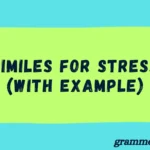Finding the right words matters. A single letter can change the entire meaning of what you’re trying to say. This is exactly the case with Lead and LEED—two words that sound identical but mean very different things.
For students, writers, professionals, and business leaders, understanding the difference between Lead and LEED is not just about grammar—it’s about clarity, credibility, and even industry recognition. For example, if you’re writing about green building certifications and accidentally write “Lead-certified” instead of “LEED-certified,” you could confuse your audience or weaken your authority.
In this guide, we’ll go in-depth to explain the meaning of Lead vs. LEED, their correct uses, examples in real-life contexts, and easy tricks to remember which one to use. By the end, you’ll have no doubt about when to use Lead and when to use LEED.
What Does “Lead” Mean?
The word Lead has multiple meanings, depending on how it is used in a sentence. Let’s break them down:
Lead as a Verb
- Meaning: To guide, show the way, or take charge.
- Usage: Common in leadership, business, and everyday contexts.
- Example Sentences:
- She will lead the team to success.
- Good teachers lead by example.
- The captain was chosen to lead the match.
- She will lead the team to success.
Lead as a Noun
- Meaning: Refers to a position of advantage, the person in charge, or a clue in an investigation.
- Usage: Frequently seen in journalism, sports, and sales.
- Example Sentences:
- The detective followed a new lead in the case.
- The company gained a significant lead in the market.
- She is the lead actress in the film.
- The detective followed a new lead in the case.
Lead as a Metal
- Meaning: A chemical element (Pb) known for its density and toxicity.
- Usage: Industrial, scientific, and historical contexts.
- Key Facts About Lead (Metal):
- Symbol: Pb
- Atomic Number: 82
- Historically used in pipes, paints, and gasoline.
- Now largely phased out due to health risks.
- Symbol: Pb
- Example Sentences:
- Old houses often have lead pipes.
- Exposure to lead can cause serious health problems.
- Old houses often have lead pipes.
What Does “LEED” Stand For?
Unlike “Lead,” LEED is not a word—it’s an acronym.
- LEED = Leadership in Energy and Environmental Design
- Developed by the U.S. Green Building Council (USGBC) in 1993.
- Recognized worldwide as a standard for environmentally friendly and energy-efficient building design.
Purpose of LEED
- Encourages sustainable construction practices.
- Promotes energy efficiency, water conservation, and indoor air quality.
- Rewards innovation in building design and sustainability.
Levels of LEED Certification
| Level | Points Required | Description |
| Certified | 40–49 points | Entry-level achievement in sustainable building. |
| Silver | 50–59 points | Demonstrates good performance in eco-friendly practices. |
| Gold | 60–79 points | Strong commitment to sustainability. |
| Platinum | 80+ points | Highest level, reserved for the most sustainable buildings. |
Example in Sentences
- The new library achieved LEED Gold certification.
- Our office is LEED-certified, meaning it meets international green standards.
Key Differences Between Lead and LEED
Although they sound the same, Lead and LEED are not interchangeable.
| Feature | Lead | LEED |
| Type | Word | Acronym |
| Part of Speech | Verb, noun, element | Acronym (proper noun) |
| Meaning | To guide, clue, or metal | Green building certification |
| Usage Context | General English, science, leadership | Architecture, engineering, sustainability |
| Example Sentence | “She will lead the group.” | “The school is LEED-certified.” |
Common Mistakes People Make
Even professionals mix up these terms. Here are the most common errors:
- Writing LEAD-certified instead of LEED-certified.
- Using Lead when referring to buildings with environmental recognition.
- Confusing pencil lead (actually graphite) with metallic lead.
- Writing LEED when they mean leadership (e.g., He will LEED the project ❌).
Examples of Errors and Corrections
- ❌ The company headquarters is Lead-certified.
- ✅ The company headquarters is LEED-certified.
- ❌ He was chosen to LEED the team.
- ✅ He was chosen to lead the team.
How to Remember the Difference
Here are a few tricks:
- Memory Trick 1: LEED with two Es = Environment + Efficiency.
- Memory Trick 2: Lead with an A = Action (to guide).
- Visual Reminder: Picture a green leaf for LEED (environmental) and a leader for Lead (guidance).
Correct Usage in Sentences
Lead
- The guide will lead us through the forest.
- The company gained a lead in sales this year.
- Old pipes may contain lead that is harmful to health.
LEED
- The hospital achieved LEED Platinum certification.
- The architect specializes in LEED-certified buildings.
- A LEED-certified home saves energy and reduces costs.
Why Using the Right Term Matters
Using the wrong term may seem like a small mistake, but it has bigger consequences:
- Professional credibility – In industries like construction and sustainability, accuracy matters.
- Academic correctness – Students writing essays must distinguish between the two.
- Business branding – Companies boast about LEED certification; calling it “Lead” is misleading.
Quote to Remember:
“The difference between the almost right word and the right word is really a large matter—it’s the difference between the lightning bug and the lightning.” – Mark Twain
Also Read This: Ill vs Sick: What’s the Difference and When to Use Each?
Case Study: The Importance of Using LEED Correctly
In 2018, a global architecture firm promoted its new headquarters as “Lead-certified.” Industry peers criticized the announcement, pointing out that “Lead” referred to a toxic metal, not a green building standard. The company quickly corrected the mistake to “LEED-certified.”
Lesson: Using the wrong term can harm credibility and create negative publicity.
Quick Quiz: Test Your Knowledge
Choose the correct word (Lead or LEED) for each sentence:
- The captain will ___ the football team.
- The museum is ___-certified for its eco-friendly design.
- Investigators found a new ___ in the missing person case.
- Old gasoline once contained ___, but it has been phased out.
- The architect specializes in ___ Platinum buildings.
(Answers at the end of the article.)
Conclusion
The words Lead and LEED may sound the same, but they belong to very different worlds.
- Lead is about guiding, taking charge, or referring to the metal.
- LEED is a globally recognized standard for sustainable and green building design.
By learning the distinction, you not only improve your writing but also show professional accuracy and attention to detail. Remember: LEED with two Es is for the Environment. Lead with an A is for Action.
Quiz Answers
- Lead
- LEED
- Lead
- Lead
- LEED

Emma-Brooke is the passionate voice behind GrammerHome.com, where she simplifies English grammar for learners across the globe. With a deep love for language and years of experience in grammar instruction, Emma specializes in breaking down complex rules into clear, easy-to-understand tips.




